On October 7, 2021, Prime Minister Narendra Modi completed 20 successful years in high public office. First, as chief minister of Gujarat, and then as Prime Minister, his two tenures as chief executive have redefined leadership. Nowhere is this more visible than in the historic Swachhata campaign.
The first accomplishment is the massive rejuvenation of water bodies in Gujarat.From acute scarcity to water adequacy in a mere two decades, the turnaround for a state that was perennially short of water is astounding. Not only did Modi as CMoversee the construction of the Narmada canal, he also led the augmentation of all canal systems and water sources in the state. It led to the state government spending more than Rs 1 lakh crore in thelast two decades to build 184,000 check dams and 327,000 farm ponds while deepening 31,500 ponds and reviving 1,000abandoned step-wells. These measures have resulted in a 77% increase in irrigable area and 55% increase in ground waterrecharge today.
As PM, his focus on rejuvenating water systems-especially in our cities-is now bearing fruit. His aim: to make the country'water secure' through the Atal Mission for Rejuvenation and Urban Transformation 2.0 (AMRUT 2.0) and Jal Jeevan Mission.
The guiding philosophy is based on the Gandhian principles of Sarvodaya and self-sufficiency. Gandhiji was the firstproponent of Swachhata - he highlighted the importance of cleanliness, saying "sanitation is more important than Independence" at the Banaras Hindu University in 1916.
On October 2, 2005, Modi launched the Gujarat Urban Development Year-the 'Nirmal Gujarat' programme was the thread that connected Gandhiji's unfulfilled dream to Modi's belief that universal sanitation was the fulcrum on which development would stand. The programme introduced many innovative features such as community involvement, women-led implementation, and focus on behavioural change, demand-driven approach, and financial incentives. The strides made in Gujarat informed his idea of the Swachh Bharat Mission to convert Gandhiji's dream into a reality.
A few cynics thought it would be impossible to become an Open Defecation Free (ODF) country. We have gone from a meagre 38% ODF status in 2014 to almost 100% today, the notable exception being the state of West Bengal. Under the Swachh Bharat Mission - Urban (SBM-U), this government has built more than 73 lakh toilets and increased the solid waste management processing capability of urban areas from 18% in 2014 to more than 70% today. Taking it to the next level, the Centre launched the SBM-U 2.0 to capitalise on this momentum, and go from being an 'ODF India' to a
'Garbage-free India'.
The PM is reimagining cities by undertaking the most comprehensive planned urbanisation exercise in the world. We have unlocked the trapped potential of our cities by making a quantum leap in urban investments. In the last six years alone, the Modi government has spent Rs 11.83 lakh crore-a seven-fold increase over the Rs 1.57 lakh crores that was spent between 2004 and 2014-on upgrading critical urban infrastructure while mainstreaming climate change, gender,
heritage, and equity.
Under the Pradhan Mantri Awas Yojana - Urban (PMAY-U) - this government has sanctioned almost 1.14 crore houses, with beneficiaries already moving into more than 51 lakh housing units. The AMRUT Mission has addressed the needs of basic civic infrastructure in 500 cities with populations of more than 1 lakh. This has now been followed by AMRUT 2.0 which envisages universal water supply with tap connection in all statutory towns in the country. The Smart Cities Mission has embedded a culture of innovation in urban development that all the 4,378 urban centres can replicate.
These initiatives reflect PM's coherent vision for the pyramid of urban development in India - right from the basic needs of sanitation and housing to advanced digital solutions and mobility.
I firmly believe that he has done more to reform governance than any past administration. One only needs to look at the sheer scope of reforms that he has effected: be it toilets, bank accounts, digital services, drinking water, electricity, defence, or cities, he has stamped his vision on the country.
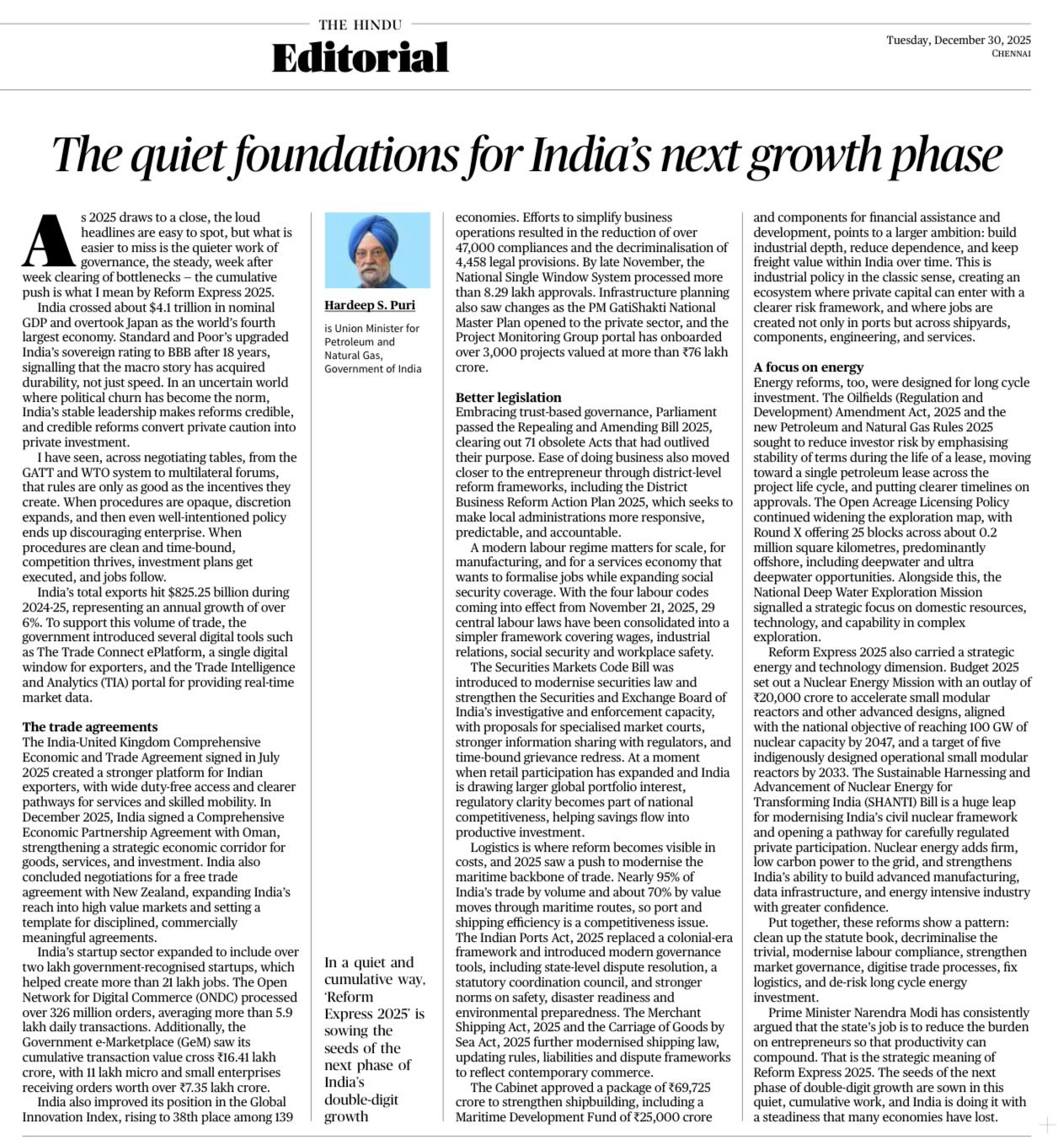
The quieter work of governance, the steady, week after week clearing of bottlenecks - this cumulative push is what I mean by Refo...
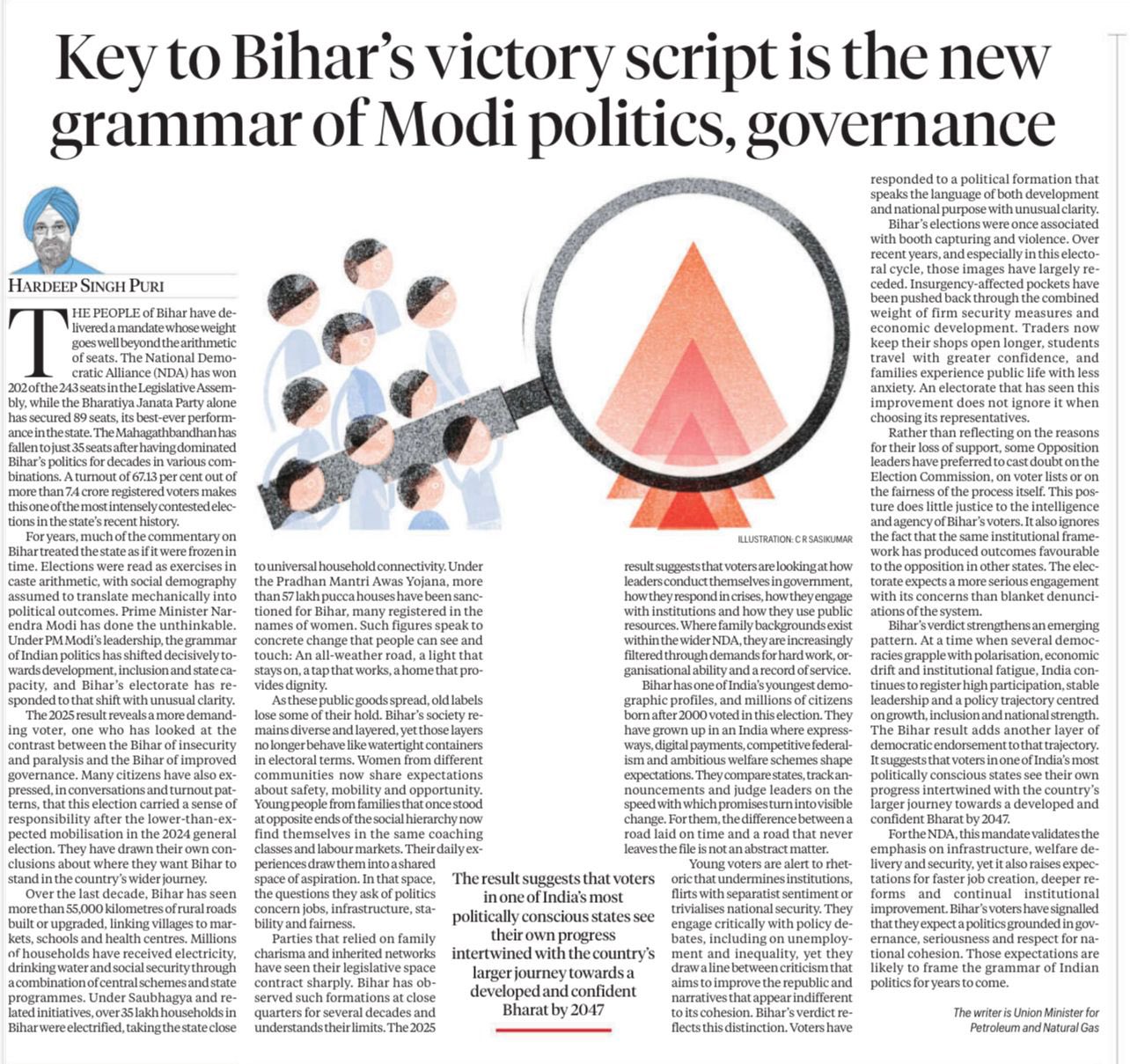
PM Sh Narendra Modi Ji has done the unthinkable in Bihar and it will change the grammar and lexicon of Indian politics for the ti...
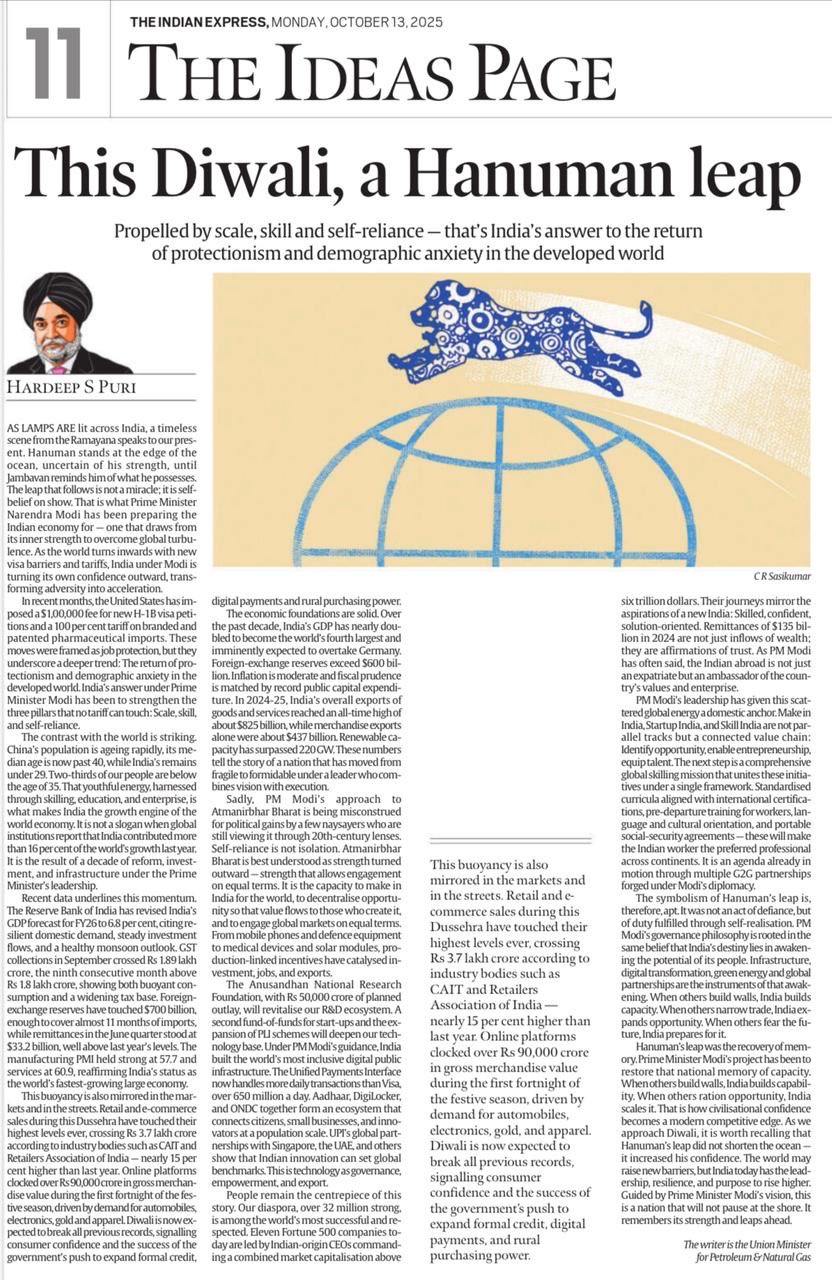
As the world passes through a period of geopolitical turmoil and uncertainty, India, under the visionary & decisive leadership of ...
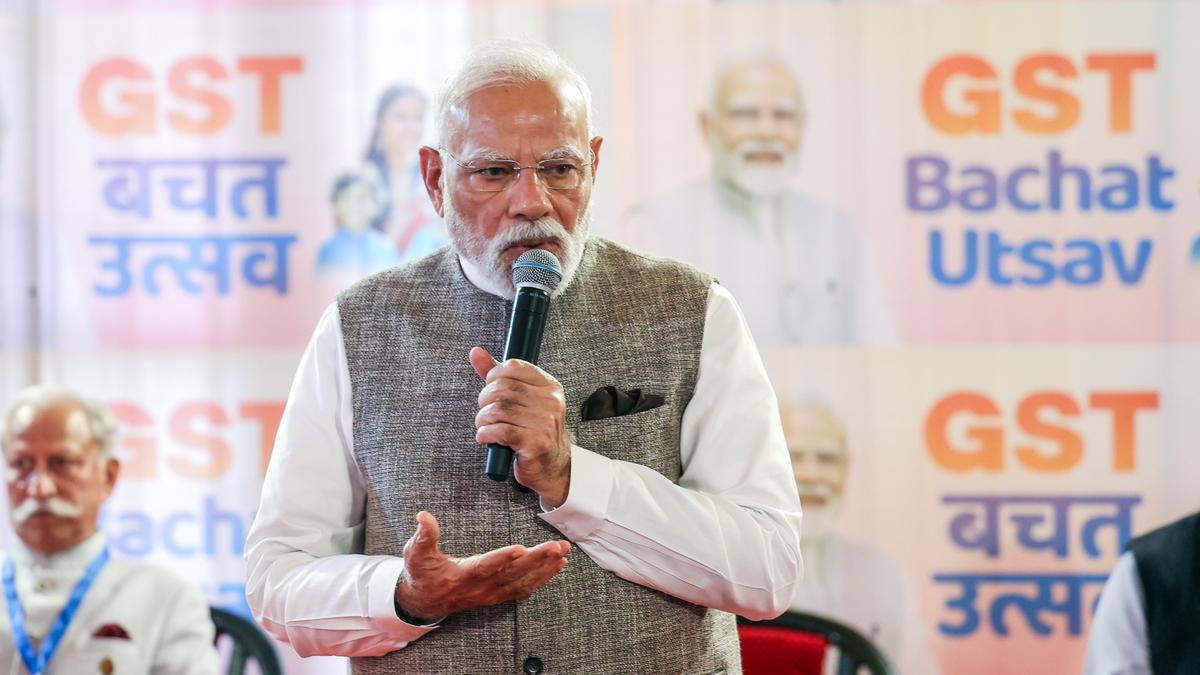
The Prime Minister’s professionalism and work ethic are what make the difference on the ground Praise has been showered on Pr...
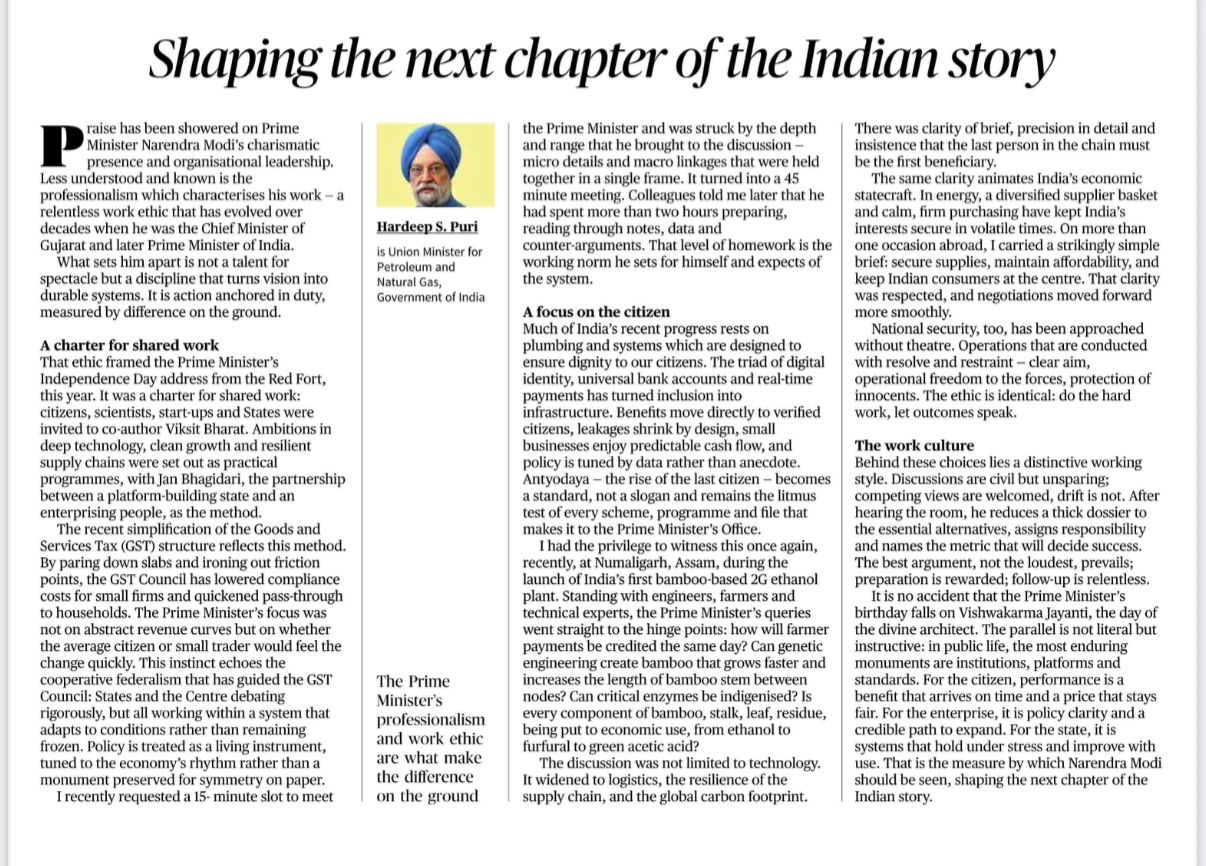
Shaping the next chapter of the Indian story!...
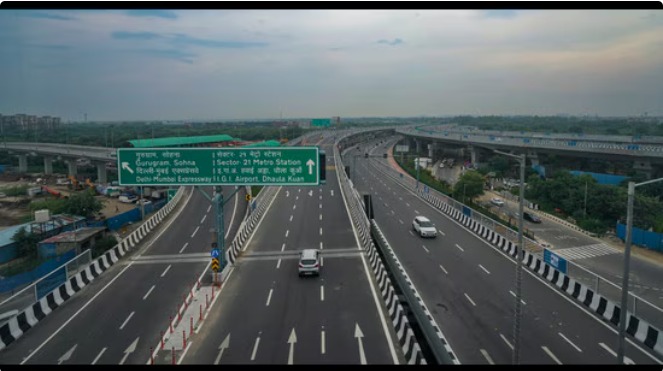
Indian cities are again on that path to being modern yet humane, ambitious yet inclusive, global in outlook yet rooted in our valu...

India’s fact-rich story of resilience, growth and energy security will silence the ‘global doubters’ who call it a ‘dead e...
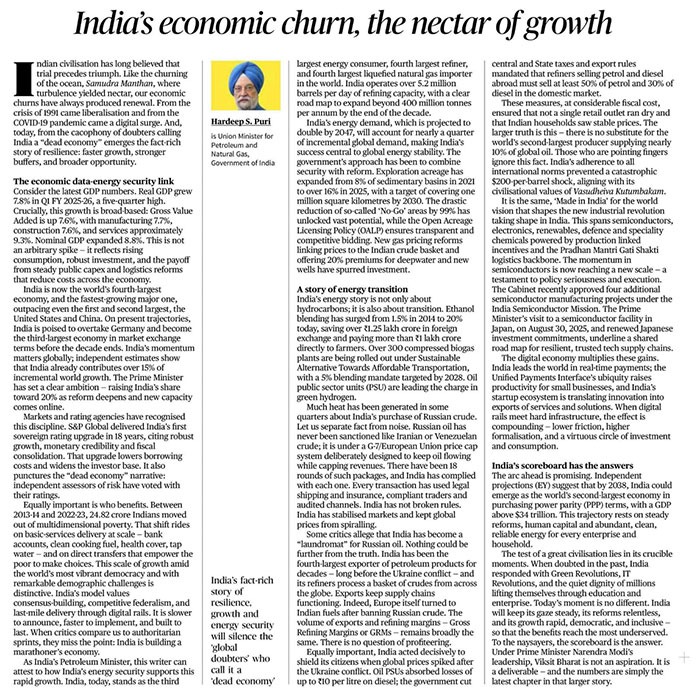
The test of a great civilisation lies in its crucible moments. When doubted in the past, India responded with Green Revolutions, I...
.jpeg)
विकसित भारत के लिए प्रधानमंत्री श्री नरेंद्र मोद...